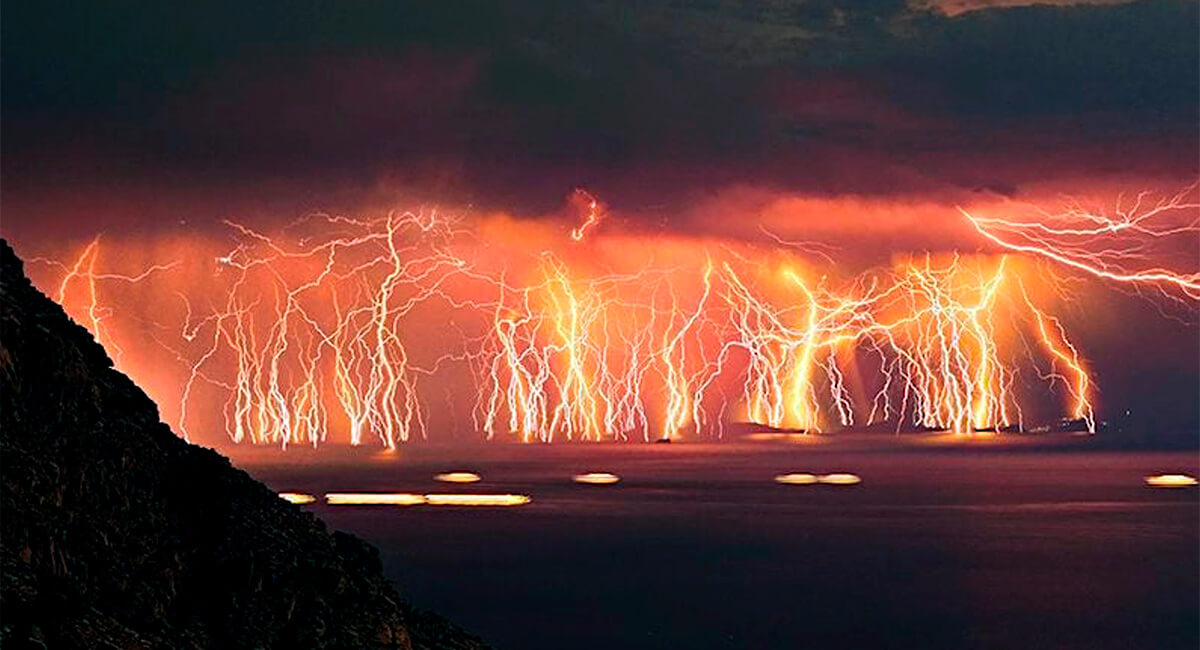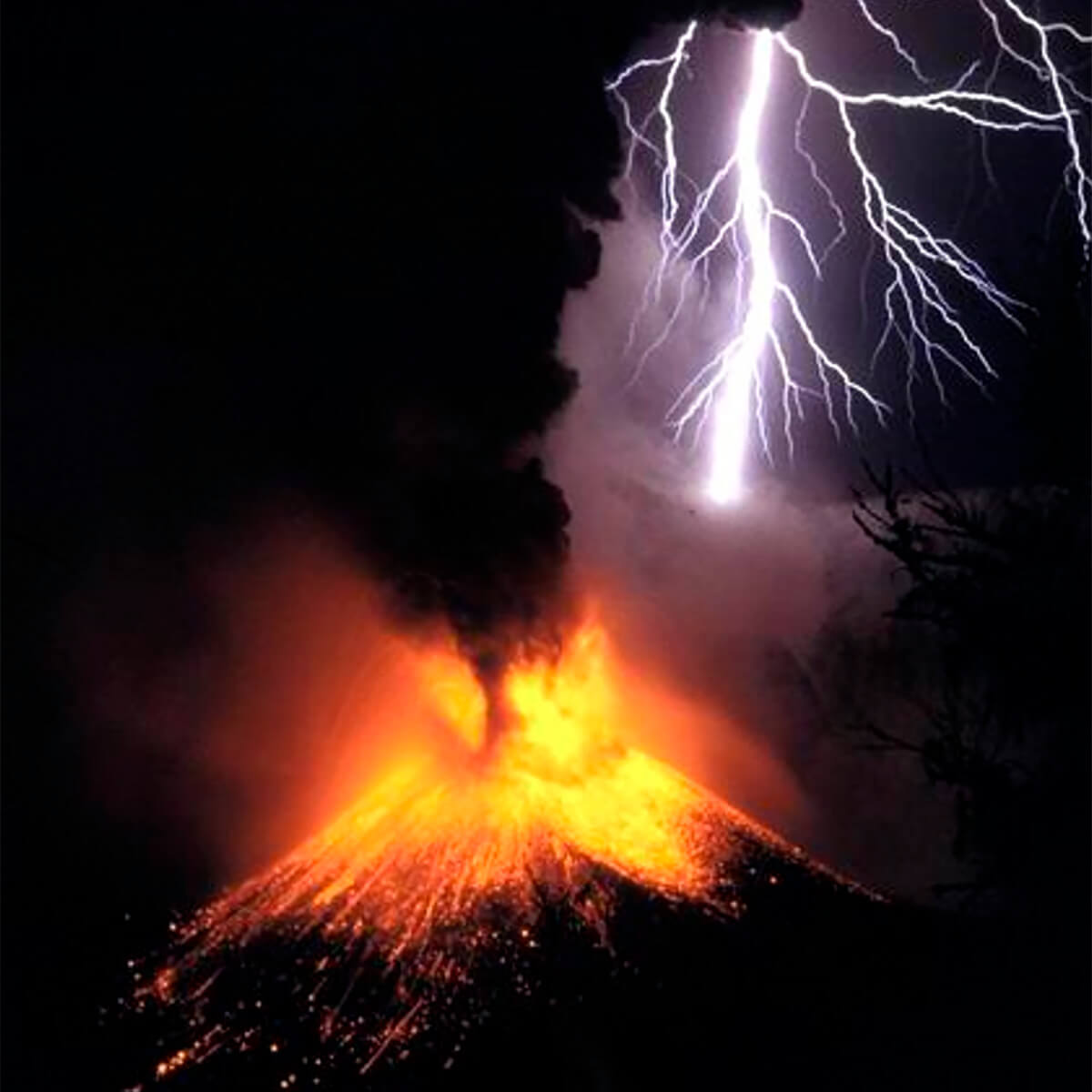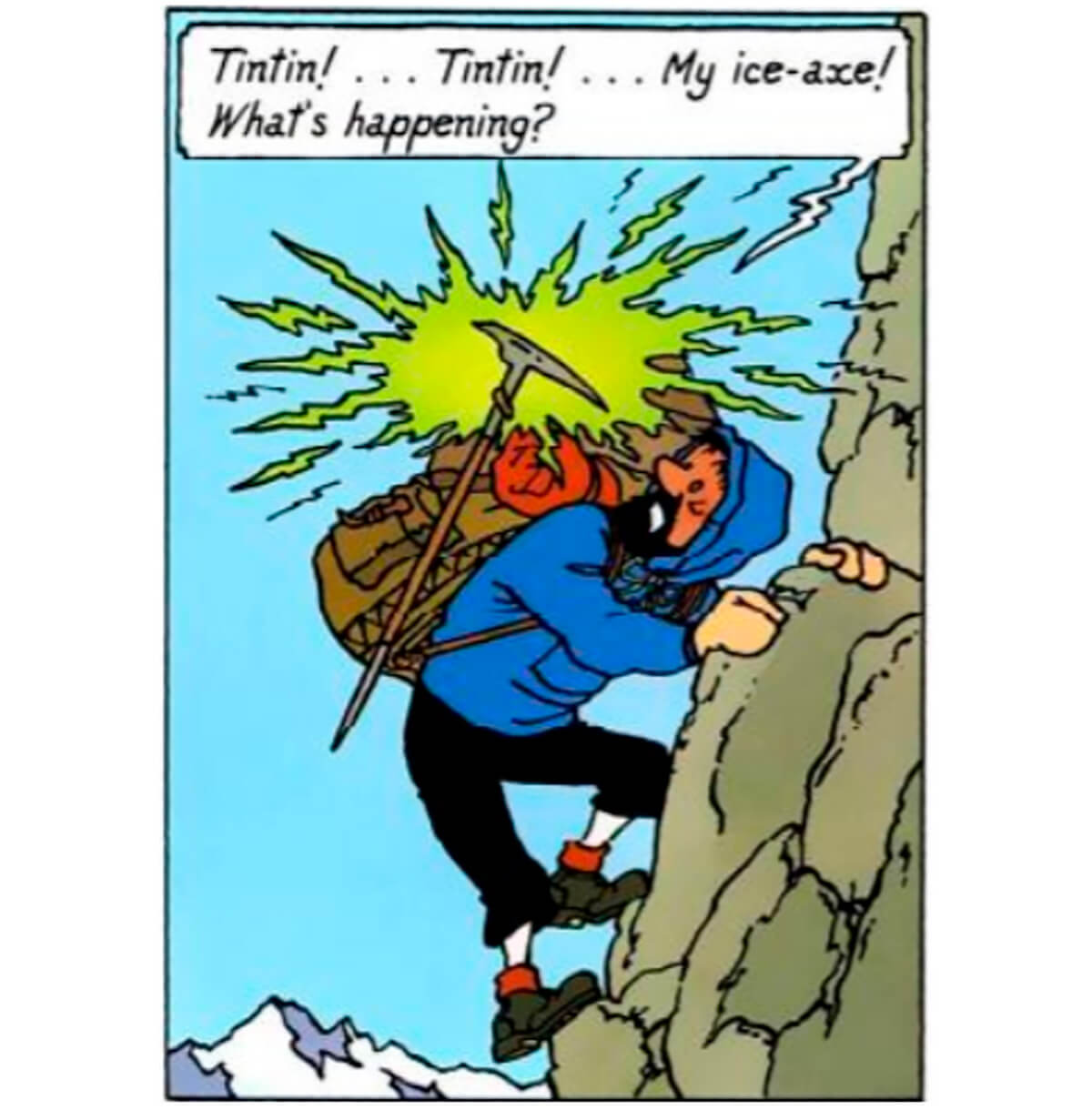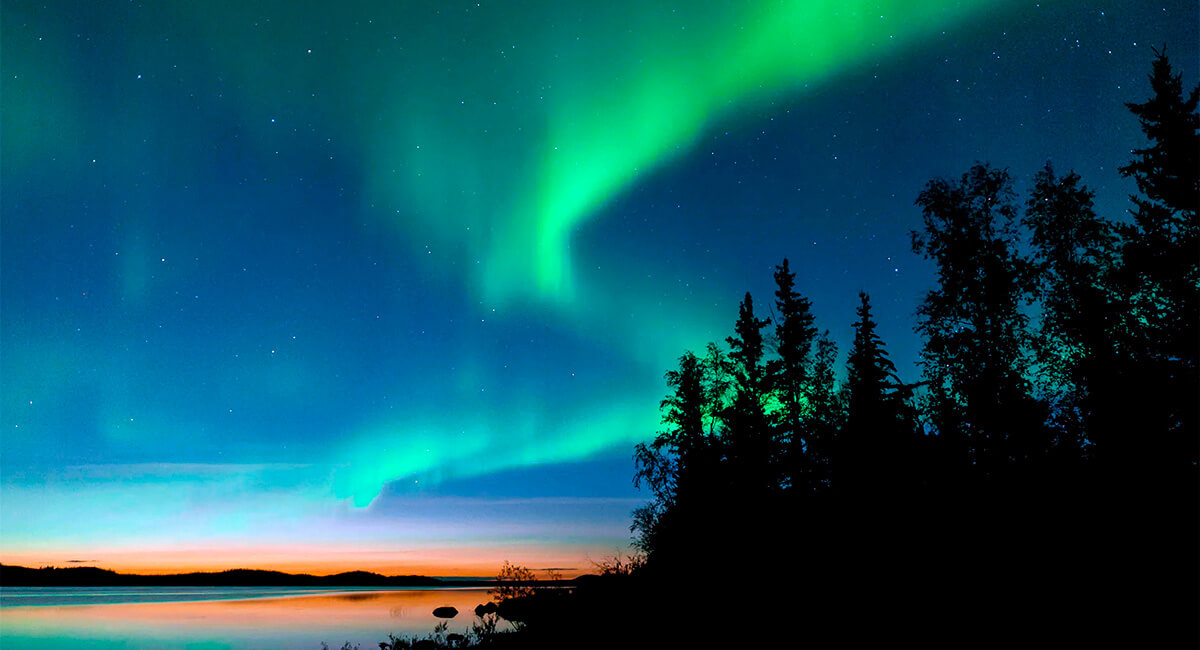There are many unusual natural phenomena that can be explained by science – and some that remain unexplained. Some which I had always assumed to exist, such as swamp gas (blue lights above swamps), still lack adequate scientific theories, and perhaps are better viewed as figments of human imagination. The role of human psychology, and our tendency to see things which are not there, and assign them unlikely properties, remains a big part of the story. Many of the well understood phenomena fall in the realm of geoscience, such as sinkholes, lava tubes, fumaroles, and columnar basalts. Leaving those aside as already familiar to CSEG readers, here are some of my favourites.
Unexplained lights
I started this article because I wanted to understand the lights called swamp or marsh gas, something I’ve always heard about, especially as a more scientific, rational explanation for UFO sightings. This phenomenon of mysterious blue lights wavering above swamps and marshes is woven into local folklore in cultures around the world, which often involve some sort of supernatural explanation such as ghosts or other spirits. I have been unable to find a solid scientific theory. Most assume that methane (CH4) escaping from swampy areas, where anaerobic decomposition of organic matter often occurs, is gently burning. Along with methane, the other main by-products of this process are carbon dioxide, nitrogen, and phosphines (PH3). When phosphines are exposed to air, supposedly they can spontaneously combust, and in turn ignite the methane. However, pure phosphine does not self ignite; this only happens if it is contaminated with phosphorous tetrahydride (P2H4). If this happens, the resulting flame is green, and gives off lots of smoke and a distinctive odor, none of which fits the common descriptions of swamp gas lights. All the images found on the Internet appear to be fake. Let’s assign swamp gas to the unexplained category.
There are many other types of mysterious lights reported around the world. The Hessdalen lights for example, seen in a small valley in Norway, intrigue me. The scientific jury is still out. Some of the more interesting theories include some kind of natural combustion triggered by large local quantities of scandium, Coulomb crystals suspended in plasma created through abnormally high levels of radon gas, and piezoelectricity generated by deformation of the local quartz-rich rocks.
Lightning
Lightning is so common that it might seem odd to highlight it here, but it is incredibly dramatic. The lightning and thunder combo is one nature’s greatest spectacles... first the dramatic visuals of lightning, followed by the aural, ranging from the bang in our ears of a nearby thunderclap all the way to the deep rumble of a distant storm felt in our bones.

The basic mechanisms behind lightning (Fig. 1) are mainly understood by science, but many of the details are very much still active areas of research. Lightning is electrostatic discharge occurring when two oppositely charged regions neutralize themselves through the exchange of electrons. The most common way a charged region is created is by what’s called the tribo-electric effect, which is essentially ion transfer caused by molecular collisions – friction, just like folding dry laundry generates a static charge. Typically deep within a thundercloud, water droplets are carried upwards by fast-moving updrafts of air, which, with increasing altitude and dropping temperatures, turn into small ice crystals. They collide with soft, heavy hailstones, collectively called graupel, that have formed higher up and are dropping towards the earth in the opposite direction. The collisions between the two cause the ice crystals to become positively charged, and the graupel negatively. Eventually the top of the cloud becomes a positively charged region, while the middle to bottom of the cloud is negatively charged. The air in between acts as a sufficient insulator to prevent free electrical equalization between these two charged regions.
Once a cloud is differentially charged as described above, the conditions for lightning are in place. These strikes can occur within the cloud (IC), between that cloud and another cloud (CC), and between the cloud and the ground (CG). The closer the bottom of the cloud is to the ground, the more likely CG lightning will occur. What we see as lightning are electrons being carried within plasma. Plasma is a charged gas made up of ions, in other words atoms and or molecules that have been stripped of at least one orbital electron.
The steps that occur before the lightning discharge are complex, hard to study, and not totally understood. It appears that within the charged cloud, something called leaders appear; the initiation mechanism is not known… it might involve cosmic rays acting as a trigger, but there are alternate theories. Leaders are channels of ionised air that connect the oppositely charged regions within the cloud. The positively charged end of the leader extends down from the top of the cloud into negatively charged wells in the middle and bottom of the cloud; conversely the negatively charged end of the leader flows into positively charged wells at the top of the cloud. If a well “fills up” while the leader is still active, then the leader can travel outside the cloud, resulting in CC and CG lightning. Typically, thunderclouds are more negatively charged than positively, so once the positive wells are filled, then lightning strikes from the bottom of the cloud shoot out to neighbouring clouds (CC) or the ground (CG).
The thunder that follows is created by a natural airgun. The lightning flash heats the surrounding air to about 28,000 C within 10 μsec., and its rapid expansion is well beyond the speed of sound, creating a high amplitude shock wave with a dominant frequency of about 100 Hz. There are many different types of lightning, resulting in many different types of thunder, which I won’t go into here. One interesting aspect of thunder is related to the speed of sound as a function of air temperature. Sound velocity is proportional to the square root of the air temperature. Much like faster deeper rocks reflect sound waves up to the Earth’s surface, fast, warm air layers near the Earth’s surface reflect thunder up into the slower, colder layers of the atmosphere at higher altitudes, meaning thunder is rarely heard at the surface more than 30 km distant from the lightning which caused it.
Volcanic lightning
There was a most intense darkness rendered more appalling by the fitful gleam of torches at intervals obscured by the transient blaze of lightning. (Pliny the Younger, AD 79)
Pliny the Younger gives us the earliest descriptions of volcanic lightning, when he wrote about the Mt. Vesuvius eruption that destroyed Pompeii and killed his uncle, Pliny the Elder. Interestingly, eruptions with plumes that extend high into the stratosphere are now known as Plinian eruptions, due to the Younger’s descriptions, which focused mainly on the eruption itself and the devastation it caused, but did mention volcanic lightning briefly.

This natural phenomenon is spectacular (Fig. 2). As might be guessed, the same electrostatic processes found with conventional lightning are at play here. Most of the charge is generated triboelectrically; ash and vapour ejected rapidly upwards in the centre of the plume collides with slower moving parts on the outside. Scientists believe up to three other mechanisms may also generate charge. As with thunderstorm lightning, rising water droplets freeze as they enter colder air at higher altitudes, and these ice crystals can coalesce into hail, which falls back down, colliding with ascendant ash, ice crystals and vapour. So there can be two tribo-electric effects occurring simultaneously. In addition to this, chunks of rock breaking into smaller fragments due to changes in temperature and pressure can generate charge, especially at the base of the plume. Lastly, there is speculation and research into the possibility that ejected radioisotopes (e.g. radon) could also be a source of electrification.
St. Elmo’s fire
This is another natural electrical phenomenon, closely related to lightning. When a strong atmospheric electrical field exists, such as that created by the mechanisms described above, corona discharges can occur around objects like church steeples and ship masts. Sharp, pointy, conductive objects enhance the electrical field in the areas of high curvature (Fig. 3). The surrounding air is normally an insulator. However, in the vicinity of the sharp object, if the electric field exceeds about 100 kV/m, enough to overcome the air’s dielectric strength, electrical breakdown occurs within the air, and electrons become unbound and free to move around, i.e. ionization occurs. What happens next is that a plasma forms, similar to a neon light. The freed electrons are accelerated by the electrical field, and colliding with other ions, free more electrons, and very quickly there is an avalanche of electrons crashing around in the proximity of the object. Some of these electrons recombine with ions and molecules, primarily nitrogen and oxygen, and recombination gives off excess energy, which produces the characteristic blue glow of St. Elmo’s fire, and sometimes a low buzzing and crackling.

Incidentally, something very similar to St. Elmo’s fire can happen when metal objects like forks are placed in microwaves and give off alarming sparks. Contrary to popular belief, this is not dangerous (to people or the microwave), it’s just electrical discharges which happen when the metal has sharp enough curves to enhance the electric field sufficiently.
Green flash
Sometimes at sunset (and more rarely at sunrise), a brief green flash of light can be seen just above the disappearing (or appearing) upper edge of the Sun (Fig. 4). This is a purely optical effect, with mechanisms very familiar to seismologists. Refraction within the atmosphere breaks the Sun’s light into the spectrum of colours, with the lower frequency red end bending down to the Earth, and the blue end upwards, meaning those higher frequency bandwidths are able to travel further, and reach the eyes of distant observers. However, the violets and blues are attenuated sufficiently by dispersion that they don’t reach the people admiring the sunset, and so it is the greens that dominate this visual effect.

Atmospheric conditions affect the type of green flash seen. If there is a normal temperature gradient, with warm surface air and decreasing temperature with altitude, then the flash really is just that, very brief, and the shape is a flattened oval. If there is an inversion, with colder surface air trapped below warmer air, then the flash can last up to 15 seconds, and the shape can be like the top half of an hourglass. The green flash is essentially a mirage effect, and so if there is temperature/density layering in the atmosphere, then multiple images of the flash can occur.
Singing sand dunes
Way back in 2008 I wrote a full article about this phenomenon (Kuhn, Singing Sand Dunes, 2008), and so I don’t need to go over it again. I just think it deserves to be highlighted here, as it really is one of Earth’s most fascinating natural effects. Also, I can provide a link to a recent PBS video (PBS Terra) that covers the topic really well, and prominently features the scientist whose work I drew heavily on for my article, Dr. Nathalie Vriend. You can actually hear the sound of the dunes buzzing and rumbling.
Blood rain
[Zeus] poured bloody drops earthwards, honoring his own [beloved] son, whom Patroklos was soon to destroy in fertile Troy far from his homeland (Iliad, 16.459)
I just had to include blood rain (or less dramatically, red rain), as an opportunity to quote both Homer and Pliny in the same article is irresistable! Rain the colour of blood (Fig. 5) has been reported since humans first left written records, often as a bad omen. In fact, the human urge to see natural events as warnings of disastrous and calamitous events is so strong that I could jam this article full of ancient quotes, but I will stop at two. The Homeric lines above are presented as a portent of the impending bloody battles at Troy. Some ancient Greeks believed that blood from battles could evaporate and fall as rain - many cultures believed the red rain was quite literally blood. Over the centuries numerous attempts to explain the red rain more rationally were made, with an iron oxide dust being a common explanation.

A definitive study in 2015 concluded that the red colour in the rain comes from a green microalgae, Trentepohlia annulata. This algae, commonly found on tree trunks and rocks, has spores of a bright orange/red colour. First, DNA analysis of red rain that fell in Kerala, India, determined that the distinctive colour did indeed come from Trentepohlia spores. Further work then found that the algae species had only recently come from Austria. This lead to different avenues of research, most interestingly, meteorological. Biologists knew that fungi and bacteria could disperse and spread via clouds, but had not been aware that alga also could. Kerala happens to lie in a region called the Inter-Tropical Convergence Zone (ITCZ), so there is speculation that Kerala may be within a sort of collection zone for clouds originating far off. The high number of literary and historical references to red rain makes me wonder whether certain algae have evolved to use clouds for spore dispersal, and I think that would be a very interesting area of research.
Aurora Borealis
The Northern Lights are a truly magical phenomenon, and leave a lasting impression on anyone who has seen them (Fig. 6). They seem to take on an almost mystical importance in the lives of Northerners. The Lights are created in much the same way as St. Elmo’s fire. Charged particles given off by the Sun, known as solar wind, continually bombard the Earth. As is commonly understood, the Earth acts like a huge magnet, with magnetic field lines emanating vertically at the Poles and curving around to join high above the equator. This magnetosphere shields the Earth from the solar wind, but some of the charged particles break through, and then accelerate parallel to the Earth’s magnetic field, which guides them toward the polar regions. Once the particles enter the atmosphere, they collide with molecules, which emit photons due to the energy of the collisions. Each type of molecule emits light of a certain wavelength, giving the Lights their characteristic colours.

Due to the higher populations at northern latitudes, the Northern Lights are better known, but there are Southern Lights also, or Aurora Australis. One interesting aspect is that the Lights are not symmetrical. The Sun’s powerful magnetic field actually distorts the Earth’s magnetic field, so rather than the perfectly symmetrical field lines depicted in diagrams, the ones facing the Sun (i.e. the day side of the Earth) are squashed closer together, and the ones on the opposite, night side, are stretched further apart. On top of that, if the Sun emits a burst of additional charged particles, this substorm emission can actually disrupt the magnetic squeezing and allow the Earth’s field lines to move closer to symmetrical. So fluctuating levels of solar wind create very dynamic interactions with the Earth’s magnetic field, manifesting themselves as the magical shimmering coloured lights we call the Aurorae. Of more pragmatic interest to geophysicists, strong Northern Lights mean high levels of solar activity, which means better signal strength for MT surveys.
Phytoplankton bioluminescence
I recall once diving into the Aegean at night with goggles on, and my outstretched hands gave off trails of sparkling lights. It was intoxicating, so I kept diving in over and over. Same thing years later, splashing in the water on a Comox beach at night with my kids, we were amazed by the waves of light generated wherever we disturbed the water.

Bioluminescence (Fig. 7) is extremely common in marine species, and scientists have estimated that it has evolved independently at least over 40 times in the oceans, based on the number of bioluminescent species and the types of chemiluminescent reactions they deploy. The advantages of being able to generate light in the darkness of the ocean deeps are obviously considerable. There are approximately 5,000 known plankton species, and a great many of these can luminesce. The most common of these are the dinoflagellates. When these single celled organisms bloom, they can create what is known as a red tide, a toxic flip side to the beauty they create at night. With plankton, the presumed reason for the bioluminescence is that that flash of light scares off predators. An alternative explanation is that the light given off by the plankton attracts predators higher up the food chain to eat the middle of the food chain plankton eaters. This has behaviour has been documented in sperm whales.
The light generating process is chemical, and involves the reaction between two substances, a luciferin and either a luciferase or photo protein. When the catalyst luciferase comes into contact with the oxidized luciferin, the reaction produces oxyluciferin plus light. Each species gives off its own specific wavelength of light. Instead of luciferase, some species, such as crystal jellies off Canada’s west coast, deploy a luciferin plus a photoprotein, which with the addition of oxygen and calcium ions, produces a similar luminescent reaction.
Bioluminescence is an incredibly interesting field, and is not limited to plankton. All sorts of plants, fungi, fish, animals, bacteria, and insects use forms of bioluminescence, for a variety of purposes, including illumination while hunting, attracting mates, warning off predators, and camouflage.
Star of Bethlehem
Given that I’m writing this in the leadup to Christmas, what better way to end off than a summary of scientific explanations for the apocryphal story of the Three Wise Men being led to the birthplace of the baby Jesus by an extremely bright star?
For starters, the translation of “magi” into “wise men” is probably a bit off, and the result of a form of ancient political correctness. Zoroastrian astronomers were not looked upon favourably at the time of early translations of the Bible. Zoroastrianism is an ancient religion practiced in Persia for perhaps up to 4,000 years, and its belief systems are very intertwined with astronomical observations. So it would make sense if some Persian astronomer priests interpreted a significant celestial occurrence to the west as an omen and undertook a trek there. There have been many astronomical explanations put forward, ranging from the plausible to the ridiculous, and I will mention a few here.
Various astronomers have worked backwards in time to place the position of significant planets and stars around the supposed date of Christ’s birth (between 6-4 BC) and suggested various planetary conjunctions as the “star” of the legend. A conjunction is when two or more bodies are seen as being in close proximity in the sky (of course they are not, they are just close to lining up when viewed form Earth). Conjunctions are not that impressive, and besides, most or all of the dates are problematic.
Supposedly a double occultation of Jupiter by the moon took place in the constellation of Aries, on March 20 and April 17 in BC 6. An occultation occurs when a closer body such as the Moon obscures part of a more distant body. The scholars who argue this support it with historical references that say that double occultations supposedly presaged the birth of kings in the Roman world, and that Aries was the zodiac house of Judea.
There is a complicated theory involving Jupiter, Venus and the star Regulus, that describes a series of events that together portended the birth of Christ. Two of the supposed events are 9 months apart, thereby indicating both fertilization (but wasn’t that Divine?) and birth. Reading the entry in Wikipedia I found myself both lost and losing interest, and staggered on to…heliacal rising, comets, and supernovas, upon which I had run out of enthusiasm. People throughout history have attempted to link naturally occurring events to random human affairs, and whether the birth of Christ was a factual event or not, I think all this business of stars and omens are human concoctions created well after the fact. I’m content to just marvel in the beauty and mystery of natural phenomena.











Share This Column